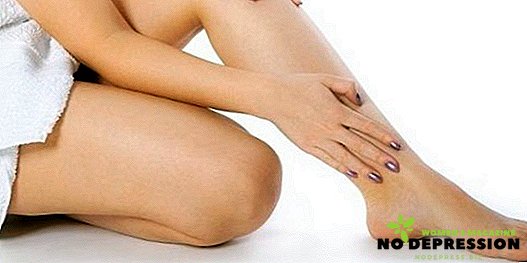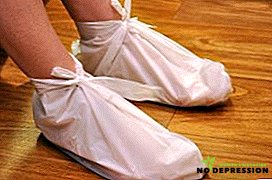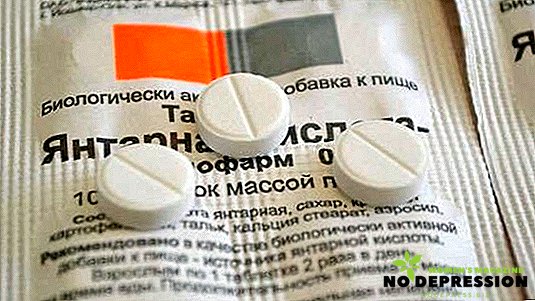Virtually every adult has been exposed to the swelling of the ankles to one degree or another. For some, this process is regular, some cases of manifestation are peculiar to someone.
In any case, you should be familiar with all the causes of this phenomenon in order to have time to find out the severity of this condition and, if necessary, to begin timely treatment. The edema itself is a collection of fluid in the organs and skin of a person and is manifested in most cases closer to the evening time.

Causes of ankle swelling
Edema is divided into two types: bilateral and unilateral.
The main causes of unilateral edema include:
- The result of injury to one of the lower limbs. An example would be a closed fracture. In this case, the swelling occurs as a result of the accumulation of blood that flows from the damaged vessels;
- A blockage of blood vessels or thrombosis. In this situation, the swelling will be accompanied by a strong pain syndrome;
- Infectious diseases, when the infection enters the blood through open wounds;
- Inflammation in the body. In such cases, the process of inflammation itself may not lead to edema, but its consequences;
- The bites of various insects;
- Varicose veins This cause of swelling is more characteristic of the female body. With the development of varicose veins, blood stagnation forms in the veins and then the fluid begins to soak into the other tissues, which leads to swelling of the ankles.
There are several other reasons for bilateral edema:
- Long standing on two limbs. Most often, such swelling is temporary. If your work is related to constant standing on your legs, try to change your body position more often. It can reduce the swelling of the legs;
- Wrong shoes. To a greater extent this applies to the shoes that you wear regularly. Girls prefer shoes with heels. If such shoes bring discomfort, then the leg is constantly in a tense state, which will eventually lead to the formation of puffiness;
- Overweight. In this situation, the load on the legs increases several times, which leads to a violation of the circulation of blood and fluid;
- Pregnancy. The appearance of edema is observed not earlier than the third trimester. The uterus begins to put pressure on the genital vein, which affects the blood circulation and slows the outflow of fluid;
- Kidney disease or cardiovascular system;
- Violation of lymph drainage.
What to do if the legs in the ankles swell
So, if you notice regular swelling of the ankles, then initially you need to find out the cause of this phenomenon. To do this, contact a specialist who, after conducting a comprehensive inspection, will be able to give you specific recommendations.
When stretching ligaments, dislocations, violations of the joints or fractures, help you can provide a traumatologist. If you have mechanical damage to the legs, then you should immediately go to the therapist.
In any case, do not self-medicate, do not begin to drink diuretic drugs, or take traditional medicine. Improper treatment can only aggravate your condition.

How to treat swelling of the legs in the ankles (medication)
There are situations when the swelling takes by surprise and there is no possibility to consult a doctor at this moment. In such cases, you can independently use certain means to improve the condition of the ankles. These remedies have an immediate effect and help reduce puffiness.
Among the most popular means of ointment "Troxevasin". The use of such an ointment is effective even if the ankle swelling is accompanied by pain. In just 15 minutes, you will notice a decrease in puffiness and a decrease in pain. Also, the ointment will help strengthen the blood vessels, capillaries and vein walls.
 The second most popular ointment is "Venitan", which is based on chestnut extract. To use such a drug is best if the swelling of the ankles provoked venous diseases.
The second most popular ointment is "Venitan", which is based on chestnut extract. To use such a drug is best if the swelling of the ankles provoked venous diseases.
It has a strengthening effect on the walls of the capillaries and veins. Similar properties for the drug "Essaven gel". But it also improves blood circulation and eliminates microthrombus.
Another effective ointment is Lioton. It can also strengthen the vascular walls, reduce swelling and pain.
So, as we see, there are quite a lot of drugs for treating edema. The effectiveness of each of them will be high if they are selected correctly. As we know the reasons that can provoke puffiness are also not small.
Before you begin treatment, you need to be 100% sure that we act on the cause itself, and not on its consequence. Therefore, specialist advice should always remain in the first place.
Folk methods of removing the swelling of the ankles
Alternative medicine recipes can have a positive effect on the prevention and treatment of edema. Most infusions are universal. Before starting treatment, it is very important to clean the intestines a little, then the result will come much faster.
- Flax seed treatment. For infusion, take five tablespoons of seeds, cover them with boiled water. Hold over low heat for 15 minutes and then insist for at least an hour. Drink on an empty stomach during the day;
- Effective effect has a compress from fresh birch leaves. Apply them to the place of edema through the fabric and leave for 4 hours. Edema decreases after the first sessions;
- Crush the onion and mix it with sugar (100 g). Insist at least 12 hours, after which the juice is used for compresses;
- Pour ½ cup of sea salt with two liters of boiled water. Apply to the site of edema tissue soaked in this solution. To achieve the desired result, use daily for 10-12 days;

- Grind the Kalanchoe leaf and combine it with vodka. Put the bottle in a dark place for two weeks. Then the resulting tincture wipe swollen place;
- Buy in a pharmacy white clay and dilute it with lukewarm water. Do daily compresses for 2 hours;
- Compresses from fresh potatoes also help to get rid of puffiness. To do this, chop the potatoes with a blender and put gruel on the ankle. Close the plastic bag and leave for an hour.
In order to reduce swelling or even get rid of it, you need to focus your diet on diuretic foods. Among them are cottage cheese, kefir, ryazhenka, cucumbers, apples, pumpkin and others. You can also drink broth from the hips or the cranberry juice.
Effective will be various compresses based on alcohol or vodka. In addition to eliminating edema, they also help reduce pain.
Preventive methods to prevent puffiness
Often there are cases when the swelling of the ankles is not associated with the development of any disease, but at the same time, it has regular manifestations.

In order to improve the condition of your feet, try to regularly take the following measures:
- When you come home from work, lie down for 15 minutes on the bed and lift your legs above your head;
- The amount of fluid you drink is reduced to 1.5-2 liters per day;
- Consumption of salt is minimized or for a while refuse from it altogether;
- Take a shower, alternating hot and cold water. This will increase blood circulation and help reduce puffiness;
- If your shoe brings discomfort, replace it with a more comfortable one;
- Perform remedial gymnastics;
- If puffiness is associated with overweight, try to keep a diet in order to slightly remove those extra pounds;
- Take a course of massage.
In order to completely get rid of such a disease as swelling of the legs in the ankles, it is better to practice complex treatment. Combine medicines and traditional medicine, and do not forget to engage in prevention, and then you will feel great, and your legs will tell you "thank you."
In the next video there is more information on how to treat with folk remedies the swelling of the legs in the ankle area.













